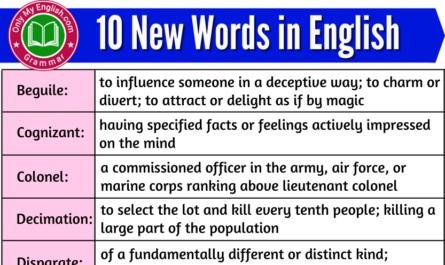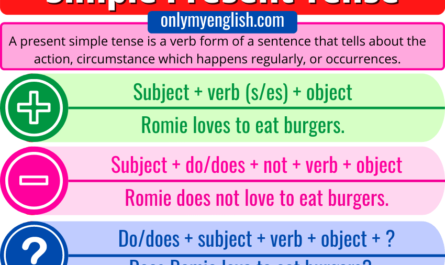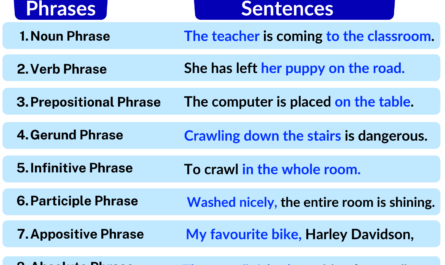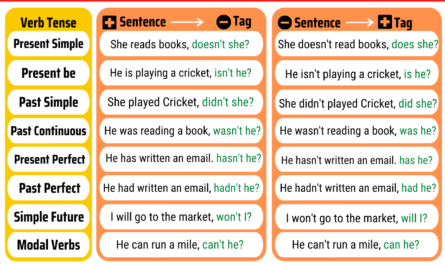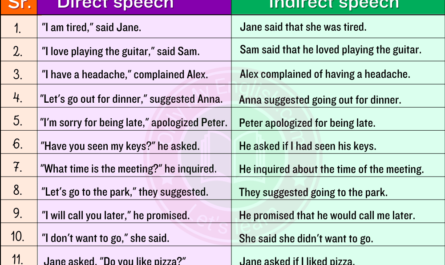Active Passive Voice Rules:
In the English Language, as we talk about many sentences in English with our nearby persons. These conversational statements or sentences can be of any work, place, thing, task, event, etc. which can be expressed by the verb, and its form is called the change of voice.
According to the voice of the sentence and the verb of action, it has two types
- Active voice
- Passive voice.
The Active voice and the Passive voice now describe the voices of the action carried by the subject on any object or something like a thing, material, etc.
In an active voice or passive voice, the sentence’s meaning remains the same, but the structure and the tense of a sentence can be changed.
#1. Active Voice:
An active voice is a sentence that expresses where the subject does something or plays any action declared by the verb, the doer of the action on which the action can occur.
- Active voice sentences always start with the subject and do an action on the verb.
- It is called an active voice because it shows the action taken by the subject.
- It is the most convenient way to describe the action of the subject performed on the object.
- Active voice is the simplest way and basic type of writing a sentence in the English language.
General structure:
Subject + verb + object.
Example: He writes a book.
Here, “He” is a subject, a doer in the sentence which acts. “a book” is an object, on which the subject is performing the action, and “write” is a verb form of action in which a subject is performing or does something.
#2. Passive Voice:
The passive voice is a sentence in which the verb is in the passive form, and the subject is operated upon the verb.
- It simply means that the subject in a sentence becomes the receiver, and the verb, which is in a passive form, is performed as a subject in the sentence.
- The passive voice is not the simplest way of writing. It can be a preference where it is used to modify the content and to have a special effect.
- A passive voice begins with an object, followed by the verb, and the subject comes at the end of the sentence.
General structure:
Object + verb + subject
Example:
- Passive statement: A book is written by him.
- Active statement: He writes a book.
Here, the verb form tells us that the subject does something to that object.
“A book” becomes a subject.
“He” is a subject, a doer in the sentence which acts. “a book” is an object, on which the subject is performing the action, and “write” is a verb form of action in which a subject is performing or does something.
In a passive voice, the subject of a sentence in an active voice becomes the third person, and the verb form is converted into the past participle form, respectively.
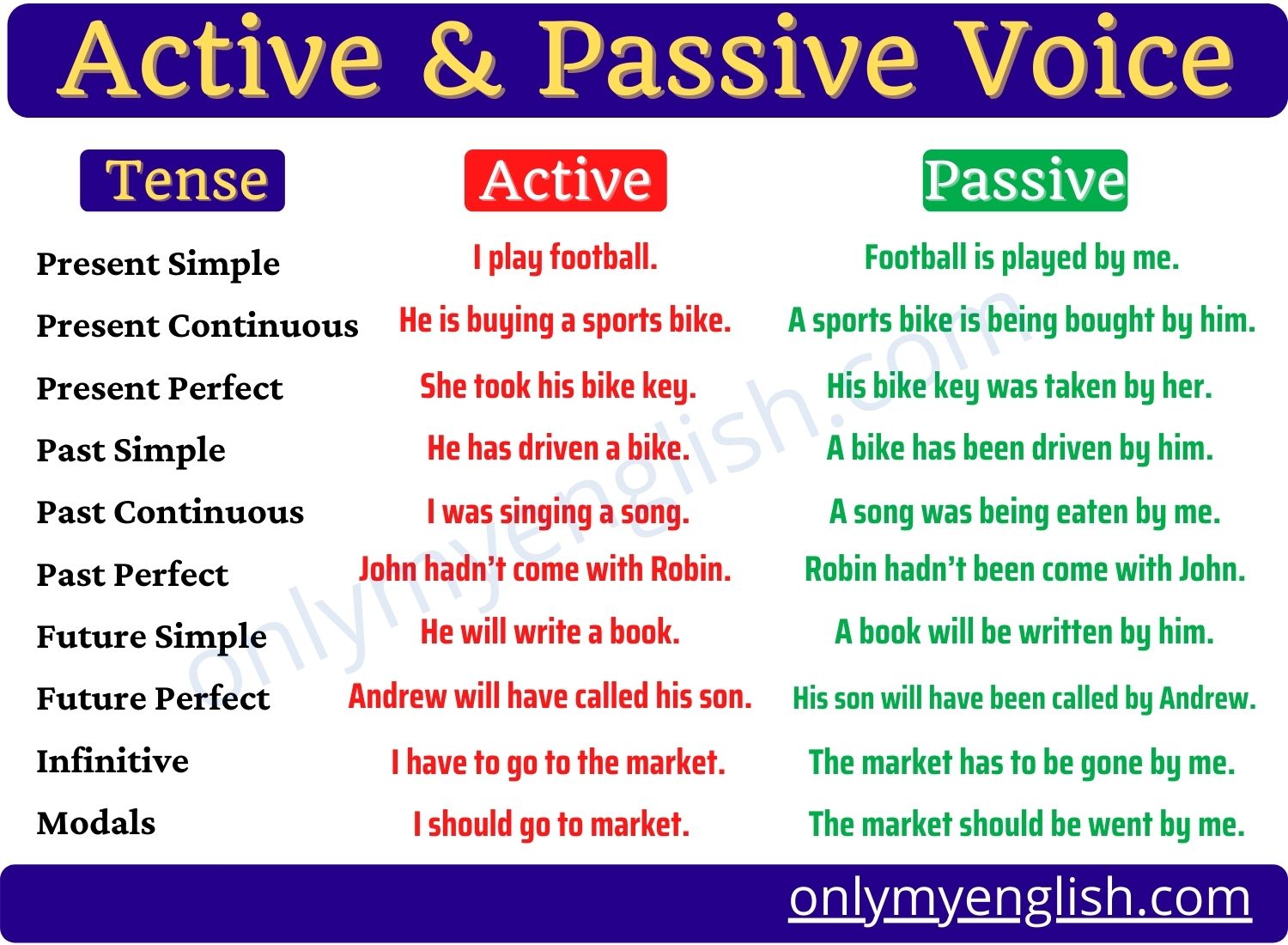
Examples of Active voice and Passive voice:
- Active] He completes the task.
- Passive] The task is completed by him.
- A] Sarah eats an ice cream.
- P] An ice cream is eaten by Sarah.
- A] James helps the stranger.
- P] The stranger is helped by James.
- A] She wore a beautiful dress.
- P] A beautiful dress was being worn by her.
- A] My friend brings the beverages.
- P] The beverages are bought by my friend.
To identify the Active voice and Passive voice separately, we simply have to identify the structure order of the sentence.
- Structure of Active Voice,
Subject + Verb + Object
- Structure of Passive Voice,
Object + Verb + Subject
Conversion of active voice into passive voice and vice versa:
Certain rules are given according to the tenses.
1. Simple Present Tense:
To convert an Active voice sentence in Simple Present Tense into Passive voice,
Structure:
Active voice: Subject + verb (base form) + Object.
Passive voice: Object + is/am/are + verb (past participle) + subject (passive)
| Active voice | Passive voice: |
| He studies novels. | Novels are studied by him. |
| They speak the Madrid language. | The Madrid language is spoken by them. |
| I play football every day. | Football is played by me every day. |
2. Present Continuous Tense:
To convert an Active voice sentence in Present Continuous Tense into Passive voice,
Structure:
Active voice: Subject + is/am/are + verb (present participle) + Object.
Passive voice: Object + is/am/are + being + verb (past participle) + subject (passive)
| Active voice | Passive voice: |
| He is buying a sports bike. | A sports bike is being bought by him. |
| They are cooking chicken grills. | The chicken grills are being cooked by them. |
| The doctor is doing the heart operation. | The heart operation is being done by the doctor. |
3. Present Perfect Tense:
To convert an Active voice sentence in Present Perfect Tense into Passive voice,
Structure:
Active voice: Subject + have/has + verb (past participle) + Object.
Passive voice: Object +have/has + been + verb (past participle) + subject (passive)
| Active voice | Passive voice: |
| He has driven a bike. | A bike has been driven by him. |
| We have finished that work. | That work has been finished by us. |
| She has cooked the evening’s food. | The evening’s food has been cooked by her. |
4. Simple Past Tense:
To convert an Active voice sentence in Simple Past Tense into Passive voice,
Structure:
Active voice: Subject + verb (past simple form) + Object.
Passive voice: Object + was/were + verb (past participle) + subject (passive)
| Active voice | Passive voice: |
| She took his bike key. | His bike key was taken by her. |
| He threw the ball into the drainage. | The ball was thrown by him into the drainage. |
| They played football well. | Football was played well by them. |
5. Past Continuous Tense:
To convert an Active voice sentence in Past Continuous Tense into Passive voice,
Structure:
Active voice: Subject + was/were + verb (present participle) + Object.
Passive voice: Object + was/were + being + verb (past participle) + subject (passive)
| Active voice | Passive voice: |
| She was talking with someone. | Someone was being talked to by her. |
| He was eating today’s lunch. | Today’s lunch was being eaten by her. |
| I was singing a song. | A song was being eaten by me. |
6. Past Perfect Tense:
To convert an Active voice sentence in Past Perfect Tense into Passive voice,
Structure:
Active voice: Subject + had + verb (past participle) + Object.
Passive voice: Object +had been + verb (past participle) + subject (passive)
| Active voice | Passive voice: |
| John hadn’t come with Robin. | Robin hadn’t been come with John. |
| She had collected the stuff from the backyard. | The stuff from the backyard had been collected by her. |
| She has cooked the evening’s food. | The evening’s food has been cooked by her. |
7. Simple Future Tense:
To convert an Active voice sentence in Simple Past Tense into Passive voice,
Structure:
Active voice: Subject + will/shall + verb (base form) + Object.
Passive voice: Object + will/shall be + verb (past participle) + subject (passive)
| Active voice | Passive voice: |
| They will follow the blue Mercedez. | The blue Mercedez will be followed by them. |
| I will improve my communication skills. | My communication skills will be improving by mine. |
| He will write a book. | A book will be written by him. |
8. Future Perfect Tense:
To convert an Active voice sentence in Future Perfect Tense into Passive voice,
Structure:
Active voice: Subject + will have + verb (past participle) + Object.
Passive voice: Object + will have been + verb (past participle) + subject (passive)
| Active voice | Passive voice: |
| Andrew will have called his son. | His son will have been called by Andrew. |
| He will have answered the phone call. | The phone call will have been answered by him. |
| They will not have forgiven their enemy. | Their enemy won’t have been forgiven by them. |
